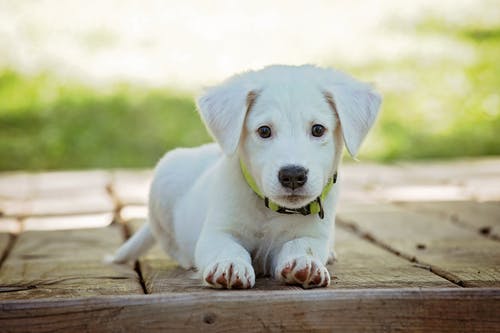Grooming isn’t just about keeping your pet looking sharp—it’s a critical component of their overall health regimen. Beginning a grooming routine early can help your furry friend get used to the process, ensuring a smoother experience for both of you. But when exactly is the best time to introduce this routine, and how do you make it as stress-free as possible? Let’s dive in and untangle the ins and outs of pet grooming.
Understanding Your Pet’s Grooming Needs
Every pet is unique, and so are their grooming requirements. Long-haired breeds such as Persians or Samoyeds need regular brushing to prevent mats and tangles, while short-haired breeds can often get by with less frequent grooming. Similarly, young pets have different needs than seniors, with the latter potentially requiring more gentle techniques.
When to Start Grooming Your Pet
The consensus among pet care professionals is that the earlier you start grooming, the better. Introducing your pet to grooming practices like brushing and bathing during their formative weeks helps establish a routine, making it a normal part of their life. If you’ve adopted an older pet, fear not—it’s never too late to start. Look for signals that they’re comfortable with, such as relaxed body language, and go slowly to build trust.
Introducing Brushing
- Begin with short brushing sessions in a comfortable setting.
- Use a brush suitable for your pet’s hair type—a bristle brush, a slicker brush, or a rake.
Frequency of Brushing
- Adjust brushing frequency according to your pet’s coat—daily for long-haired breeds and weekly for short-haired breeds.
- Seasonal changes may mean upping the brushing frequency during periods of shedding.
Bathing
Gentle Introduction to Bathing
- Make sure the water is warm, not hot, and the room is free from drafts.
- Speak in calm, reassuring tones to keep your pet at ease.
Choosing the Right Shampoo
- Opt for a mild shampoo formulated for pets to avoid skin irritation.
- Avoid human shampoos, as they can disrupt your pet’s skin pH balance.
Cat and Dog Bathing and Grooming
When it comes to cat & dog grooming experts in Pittsboro, it’s important to recognize that this is about more than aesthetics. Regular bathing removes dirt and keeps your pet’s skin healthy, preventing potential issues like parasites and infections.
Nail Trimming
Making Nail Trimming Less Stressful
- Introduce the nail clippers gradually, allowing your pet to sniff and inspect them.
- Trim just a tiny bit of the nail at a time to avoid cutting the quick.
Identifying the Right Time for Trimming
- Consistently check your pet’s nails—if they’re clicking on the floor, it’s time for a trim.
- Light-colored nails are easier to trim as the quick is visible. For darker nails, be extra cautious.
Ear and Eye Care
Easing into Ear Cleaning
- Start by massaging the base of your pet’s ears to get them used to the touch.
- Use a vet-recommended ear-cleaning solution and follow the proper technique to avoid damage.
Cat and Dog Wellness Exams
Eye and ear care are two aspects that are often addressed in Pittsboro vet checkups for cats and dogs. Regular wellness exams help catch any issues early, which is why they’re an important part of pet care alongside at-home grooming.
Maintaining Healthy Eyes
- Use a soft, damp cloth to clean any discharge from your pet’s eyes gently.
- Keep facial hair trimmed to prevent it from irritating the eyes.
Professional Grooming vs Home Grooming
There will be times when professional grooming is the way to go—perhaps for a breed-specific haircut or when your pet’s coat is particularly matted. Although some tasks are easily managed at home, professionals have the tools and expertise to handle more challenging grooming needs efficiently.
Dealing with Resistance to Grooming Routines
Dogs and cats can often be resistant to grooming for various reasons, such as past trauma, fear of the unknown, or simply because they’re not used to it. Patience and positive reinforcement are key in helping your pet become more comfortable with the process. If resistance persists, consulting a professional can provide additional strategies or indicate if there’s a more serious concern.
Advanced Grooming Techniques and Considerations
- A professional should do advanced grooming, such as styling or haircuts, to ensure the safety and comfort of your pet.
- Consider your pet’s life stage—older pets may have sensitive skin and require gentler methods.
- Adapt grooming routines to weather conditions—more frequent baths in summer and careful paw care during winter.
Geriatric Care for Senior Cats and Dogs
Owners of older pets should seek a trusted veterinarian for geriatric pets for guidance on adjusting grooming techniques to accommodate the fragility and potential health issues senior pets may face. Their advice can be pivotal in maintaining your elderly companion’s quality of life.
Conclusion
Grooming is a labor of love that not only keeps your pet looking their best but also plays a crucial role in their overall health. It’s about nurturing a bond with your companion while caring for their physical needs. Whether you’re combing out mats, trimming nails, or providing a bubbly bath, remember that each stroke and snip contributes to a happier, healthier pet. Stay patient, stay consistent, and watch as your grooming efforts pay off in wagging tails and content purrs.

